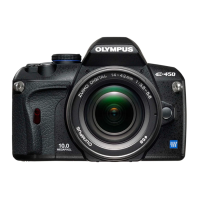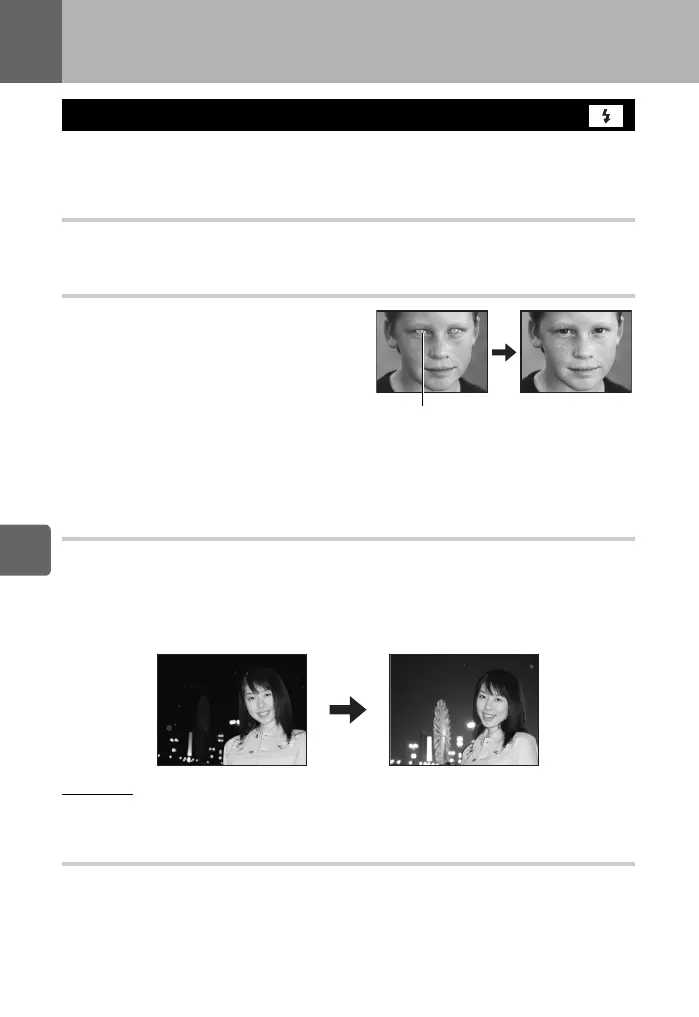66
EN
Flash shooting
7
7 Flash shooting
The camera sets the flash mode according to various factors such as firing pattern and flash
timing. Available flash modes depend on the exposure mode. The flash modes are available
to optional external flashes.
Auto flash AUTO
The flash fires automatically in low light or backlight conditions.
To shoot a subject with backlighting, position the AF target over the subject.
Red-eye reduction flash !/H
In the red-eye reduction flash mode, a series of
pre-flashes are emitted just before the regular
flash fires. This helps accustom the subject’s
eyes to the bright light and minimizes the red-
eye phenomenon. In S/M mode, the flash
always fires.
x Notes
• After the pre-flashes, it takes about 1 second before the shutter is released. Hold the camera
firmly to avoid camera shake.
• Effectiveness may be limited if the subject is not looking directly at pre-flashes, or if the
shooting range is too far. Individual physical characteristics may also limit effectiveness.
Slow synchronization (1st curtain) #SLOW
The slow synchronization flash is designed for slow shutter speeds. Normally, when shooting
with a flash, shutter speeds cannot go below a certain level to prevent camera shake. But
when shooting a subject against a night scene, fast shutter speeds can make the background
too dark. Slow synchronization allows you to capture both the background and the subject.
Since the shutter speed is slow, be sure to stabilize the camera by using a tripod so as not to
cause the picture to be blurred.
1st curtain
Usually, the flash fires right after the shutter fully opens. This is called 1st curtain. This
method is usually used during flash shooting.
Slow synchronization (2nd curtain) #SLOW2/2nd CURTAIN
2nd curtain flash fires just before the shutter closes. Changing the flash timing can create
interesting effects in your picture, such as expressing the movement of a car by showing the
tail-lights streaming backwards. The slower the shutter speed, the better the effects turn out.
In S/M mode, the flash always fires.
Flash mode setting
The subject’s eyes appear red
s0029_e_00_0_unified.book Page 66 Monday, March 2, 2009 5:26 PM

